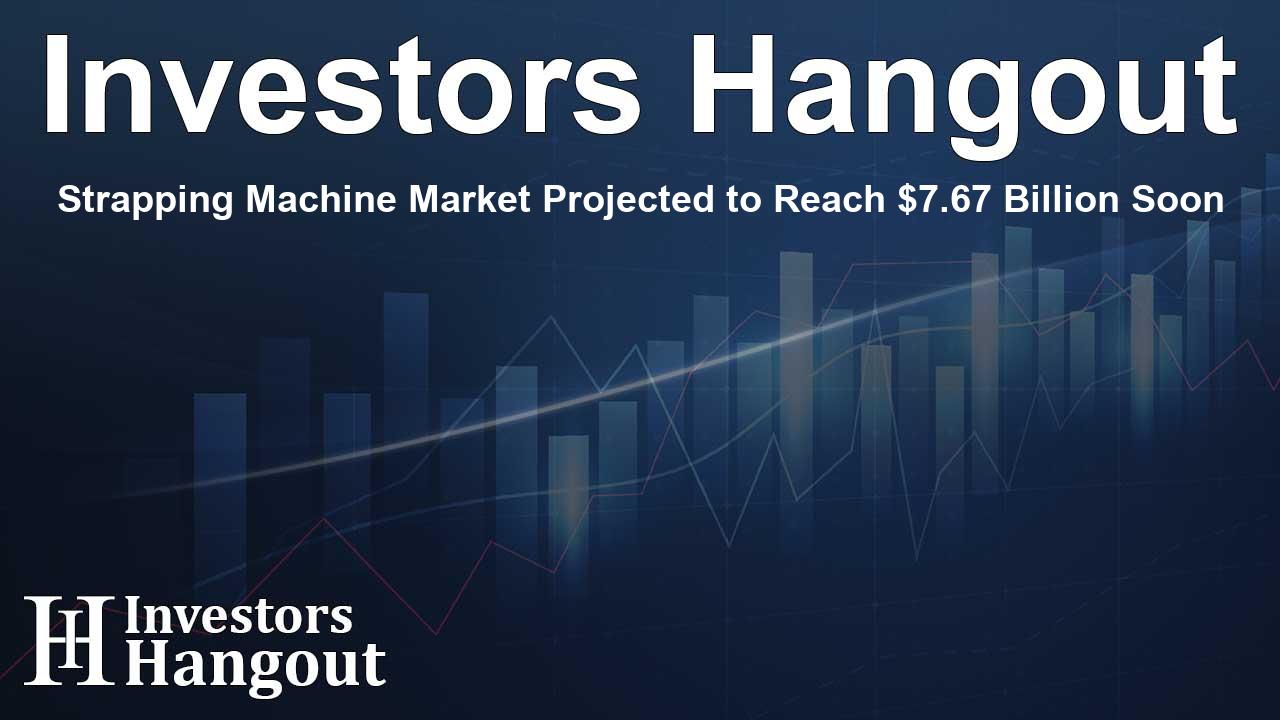Strapping Machine Market Projected to Reach $7.67 Billion Soon

Overview of the Strapping Machine Market Growth
The strapping machine market is on a significant growth trajectory, with a valuation of USD 5.23 billion recorded recently. Experts predict a rise to USD 7.67 billion by 2032, presenting a promising compound annual growth rate (CAGR) of 4.34% from 2024 to 2032. This uptick is largely fueled by the booming e-commerce sector and the pressing need for efficient packaging solutions. As businesses prioritize quick and reliable packaging methods, these machines have become integral to modern packing lines.
Factors Driving the Market
The steady expansion of the strapping machine market in the U.S. is expected, increasing from USD 1.47 billion in 2023 to around USD 2.08 billion by 2032, with an anticipated CAGR of 3.93%. Various factors, such as rising industrial automation, heightened demand for secure packaging, and the growth of logistics and e-commerce industries are powerful contributors to this trend. Innovative designs focusing on durability and energy efficiency are also set to bolster market growth.
Key Players Impacting the Strapping Machine Market
Several industry leaders are shaping the landscape, including Dynaric Inc., Fromm Holdings AG, and Mosca GmbH, among others. Each of these companies plays a vital role in enhancing the technology and capabilities of strapping machines.
Market Segmentation and Trends
By Product Type
The semi-automatic machines continue to dominate, accounting for over 52% of the market share. This segment’s popularity can be attributed to its cost-effectiveness and user-friendly functionality, making it ideal for small to medium-sized enterprises (SMEs). Businesses within tighter budgetary constraints often find semi-automatics to provide the scalability necessary for their operations.
Material Usage in Strapping Machines
In terms of material, polypropylene (PP) remains the frontrunner with a market share exceeding 48%. Its affordability and efficiency in lower-load applications make it a favored choice, particularly in diverse packaging scenarios. With a growing focus on environmental sustainability, manufacturers are now looking towards recyclable PP options, thereby enhancing the material’s appeal and practicality in various industries.
Application Sources for Strapping Machines
The food and beverage sector leads the industry, commanding a 32% market share in 2023. This dominance is a direct result of the pressing need for reliable and hygienic packaging methodologies to ensure safe food handling and distribution. As the sector evolves, innovations in packaging technology are expected to play a crucial role in meeting these demands.
Regional Market Insights
North America remains a titan in the global strapping machine market, holding over 38% of the total market share. The region's robust industrial base, coupled with strong logistics and packaging capabilities, sustains steady demand. Major players across automotive, food and beverage, and e-commerce sectors rely heavily on efficient packaging solutions, fueling further growth.
Emerging Trends in Asia-Pacific
Conversely, Asia-Pacific is predicted to emerge as the fastest-growing market for strapping machines. The rapid expansion of consumer electronics, pharmaceuticals, and logistics in countries such as China and India is significantly driving this growth. As domestic and international trade expands, the demand for cost-effective and efficient strapping solutions will inevitably rise.
Conclusion and Future Outlook
In summary, the strapping machine market is set to flourish, driven by innovations and the rising tide of e-commerce needs. With a focus on sustainability and automation in packaging processes, businesses are increasingly recognizing the intrinsic value of integrating advanced strapping solutions into their operations. For stakeholders and potential investors, the evolving landscape presents numerous opportunities for growth and expansion within this dynamic market.
Frequently Asked Questions
What is the expected growth of the strapping machine market?
The strapping machine market is expected to grow from USD 5.23 billion in 2023 to USD 7.67 billion by 2032.
What factors are contributing to the growth of this market?
Key factors include the expansion of the e-commerce sector, demand for efficient packaging, and advancements in automation.
Which segment of strapping machines is the most popular?
Semi-automatic machines dominate the market, holding over 52% of the share thanks to their cost-effectiveness and ease of use.
What material is primarily used in strapping machines?
Polypropylene (PP) is the leading material, favored for its efficiency in lower-load applications and growing sustainability focus.
Which region is leading the strapping machine market?
North America currently leads the market, but Asia-Pacific is anticipated to be the fastest-growing region due to rising industries like electronics and pharmaceuticals.
About The Author
Contact Lucas Young privately here. Or send an email with ATTN: Lucas Young as the subject to contact@investorshangout.com.
About Investors Hangout
Investors Hangout is a leading online stock forum for financial discussion and learning, offering a wide range of free tools and resources. It draws in traders of all levels, who exchange market knowledge, investigate trading tactics, and keep an eye on industry developments in real time. Featuring financial articles, stock message boards, quotes, charts, company profiles, and live news updates. Through cooperative learning and a wealth of informational resources, it helps users from novices creating their first portfolios to experts honing their techniques. Join Investors Hangout today: https://investorshangout.com/
The content of this article is based on factual, publicly available information and does not represent legal, financial, or investment advice. Investors Hangout does not offer financial advice, and the author is not a licensed financial advisor. Consult a qualified advisor before making any financial or investment decisions based on this article. This article should not be considered advice to purchase, sell, or hold any securities or other investments. If any of the material provided here is inaccurate, please contact us for corrections.
